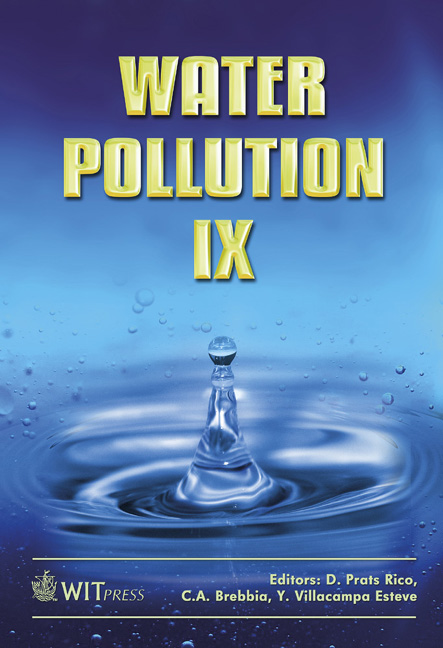Effect Of The Start-up Length On The Biological Nutrient Removal Process
Price
Free (open access)
Transaction
Volume
111
Pages
8
Page Range
521 - 528
Published
2008
Size
344 kb
Paper DOI
10.2495/WP080511
Copyright
WIT Press
Author(s)
F. J. Fernández, J. Villaseñor & L. Rodríguez
Abstract
In this work, a study of the start-up stage of a Biological Phosphorus Removal (BPR) process was carried out. To do this, SBR alternating anaerobic and aerobic conditions were used with conventional activated sludge and fed with synthetic influent at the beginning of each cycle. During the length of the cycles (4 h) the most important parameters were determined. The main results obtained were that during the first days of the start-up stage the phosphorus removal percentage increased more quickly that those of the COD and ammonium-nitrogen. However, it was necessary to extend the start-up stage to at least 30 days in order to obtain the maximum phosphorus removal percentages and a stable Phosphorus Accumulating Organisms (PAO) population, whereas the maximum COD and ammonium-nitrogen removal percentages were obtained in about ten days. Once the start-up period had finished the ratio P released to COD stored was determined, obtaining a value of about 0.14, which is significantly lower than the theoretical value (0.55), suggesting the presence of a significant GAO population. Keywords: activated sludge, biological phosphorus removal, biological nitrogen removal, start-up stage. 1 Introduction Biological Nutrient Removal (BNR) processes are being widely used to remove nutrients, Nitrogen and Phosphorous, as well as organic compounds contained in
Keywords
activated sludge, biological phosphorus removal, biological nitrogen removal, start-up stage.





